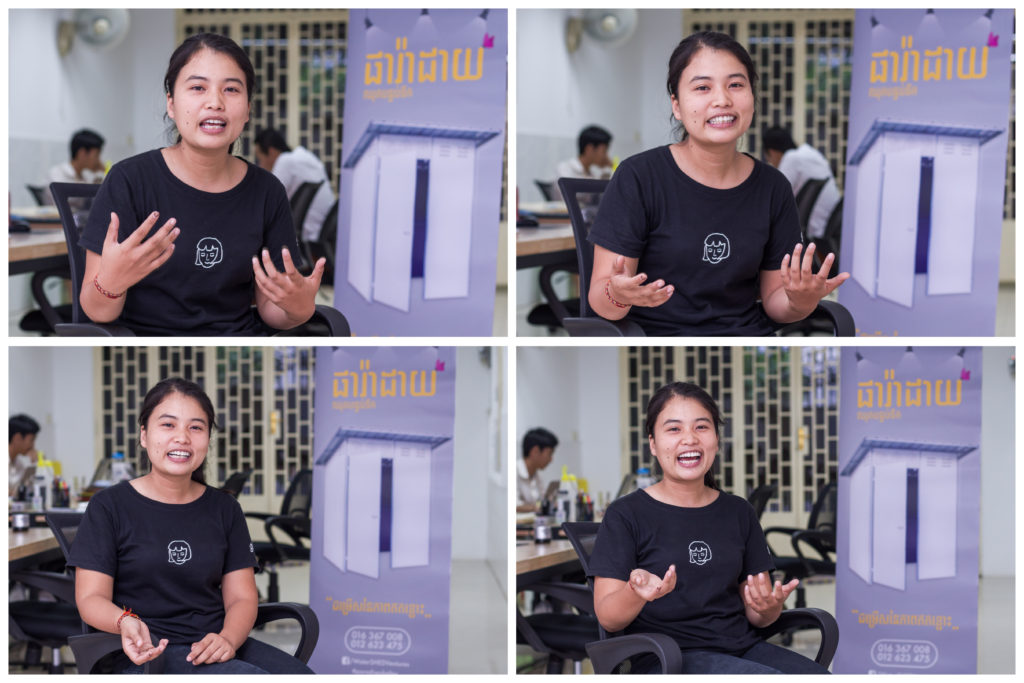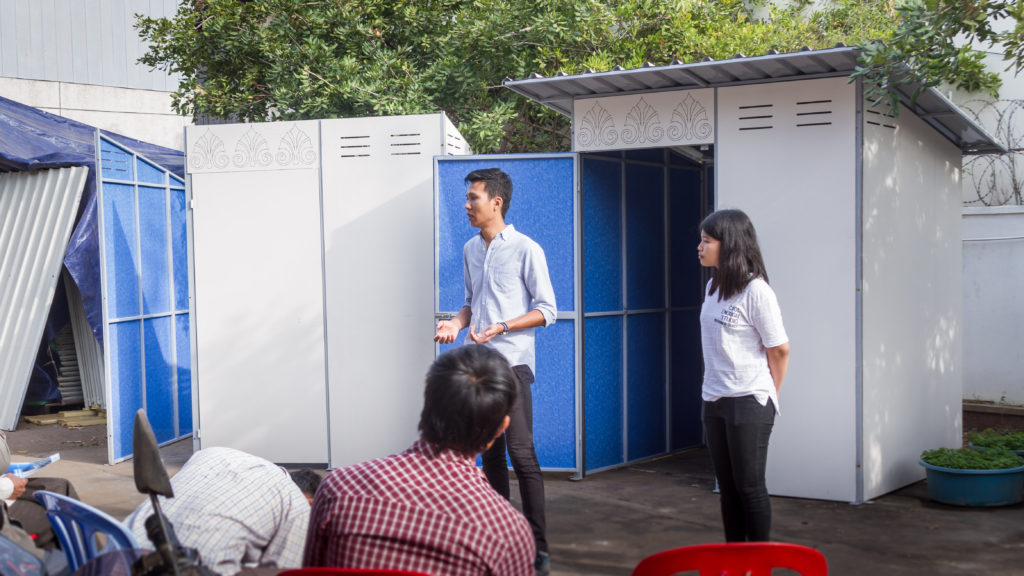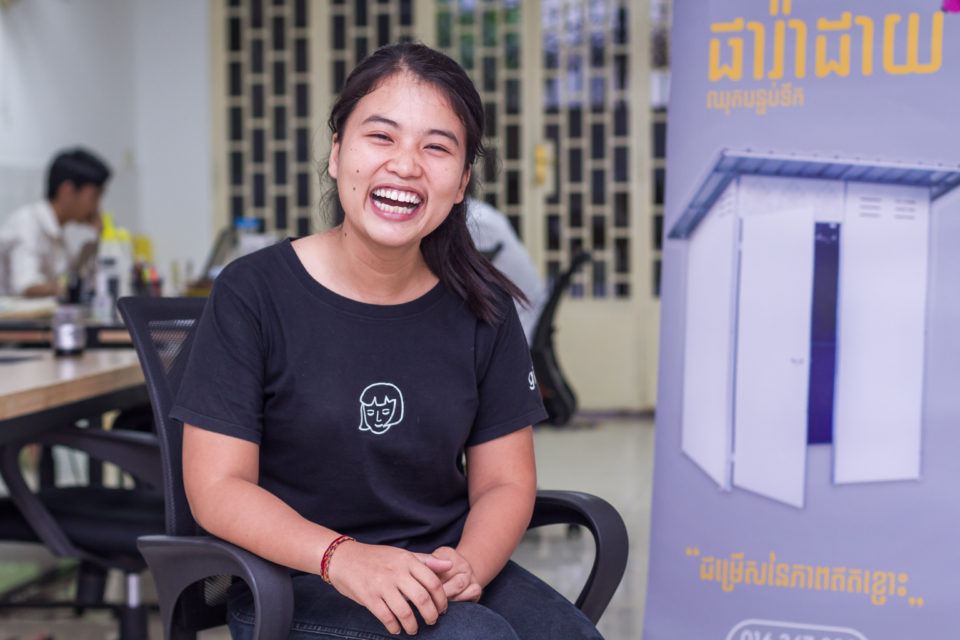In Conversation – Sothea Sao on the Paradise toilet shelter
WaterSHED’s sanitation program has seen unprecedented success over the last seven years. We helped design the all-in-one toilet, developed the supply chain by partnering with local existing businesses, and developed marketing messages that would resonate with consumers. But as toilet sales started to take off, a major gap remained in the sanitation market – the toilet shelter. Many consumers were still holding off on purchasing a toilet until they could afford and install a brick shelter.
Since 2013, we have been researching and designing a toilet shelter that could go up against the laborious and expensive brick shelter. This year we launched the Paradise toilet shelter into the Cambodian rural market.
The success of this project would not be possible without the team that has been working tirelessly throughout the research, design, and market launch. But one team member has been there throughout all the stages.
Sothea Sao, began her career at WaterSHED in 2014 as a Design Researcher. Her role focused on collecting insights from potential consumers. Those insights informed how the shelter looked, what materials we used, and how it functioned. Today, she is the General Manager at WaterSHED Ventures, the social business responsible for distribution and marketing. Here are her thoughts behind the design and marketing of the Paradise toilet shelter.

Tell me about the final design – the Paradise toilet shelter?
Our Paradise shelter is quick to install – only takes about 45 minutes – and only requires a few people to install it. It has four wall panels and one roof and doesn’t require people to have construction skills or complicated tools to put it together. Women can also do it.
How did you and the engineer come up with this design?
We based the design on two key insights. Firstly, consumers wanted a toilet that is beautiful, strong, and easy to install. Secondly, our design considered the capacity and resources of local construction businesses. We made sure businesses wouldn’t need to have high-tech tools or employ workers with sophisticated construction skills to install the shelter.
What did you learn about your customers in the design phase?
We knew from previous research that customers prefer brick shelters. When we did some more in-depth research, we found out that they prefer brick shelters specifically because they are strong and easy to clean. When we tried testing a shelter made of different materials but that provided the same function, they also liked it.
How do you now market the product to reach people?
We have distributed our product through new and existing local business partners. We also have sales agents that promote our product and explain the benefits of our product to consumers. Our sale agents are those who are active in the village and trusted by most people in their communities.
Our network also includes business owners and elected officials who have taken part in programs led by WaterSHED, our parent NGO. For example, many women who participated in WEwork (WaterSHED’s women’s empowerment peer-mentorship program), help promote our product. We also partner with home construction businesses who build houses and convince them to include the toilet shelter as part of their construction service packages.

Can your customers afford this shelter?
Among the seven million people that still don’t have a toilet, I think most can afford to buy the Paradise toilet shelter. What prevents them from buying a toilet is that it is not their priority.
How do you plan to scale (grow) the business to reach more people?
There are two big things we will focus on in order to scale the business and reach more people. The first one is to continue building our network of local suppliers. Another thing we are focusing on is to improve our distribution process. We try to make it more effective and cost efficient.
What make you want to be a social entrepreneur? Why do you choose to run or be in a social business?
I think a social entrepreneur is the key person who actually affects change in society. We have seen many studies about how to tackle world issues, yet not much has been done to deal with those issues. Social entrepreneurs are those who gather all information from those studies and find the solutions to those problems through business activities. Despite the fact that their business is even more risky, they still try their best to improve their community.

